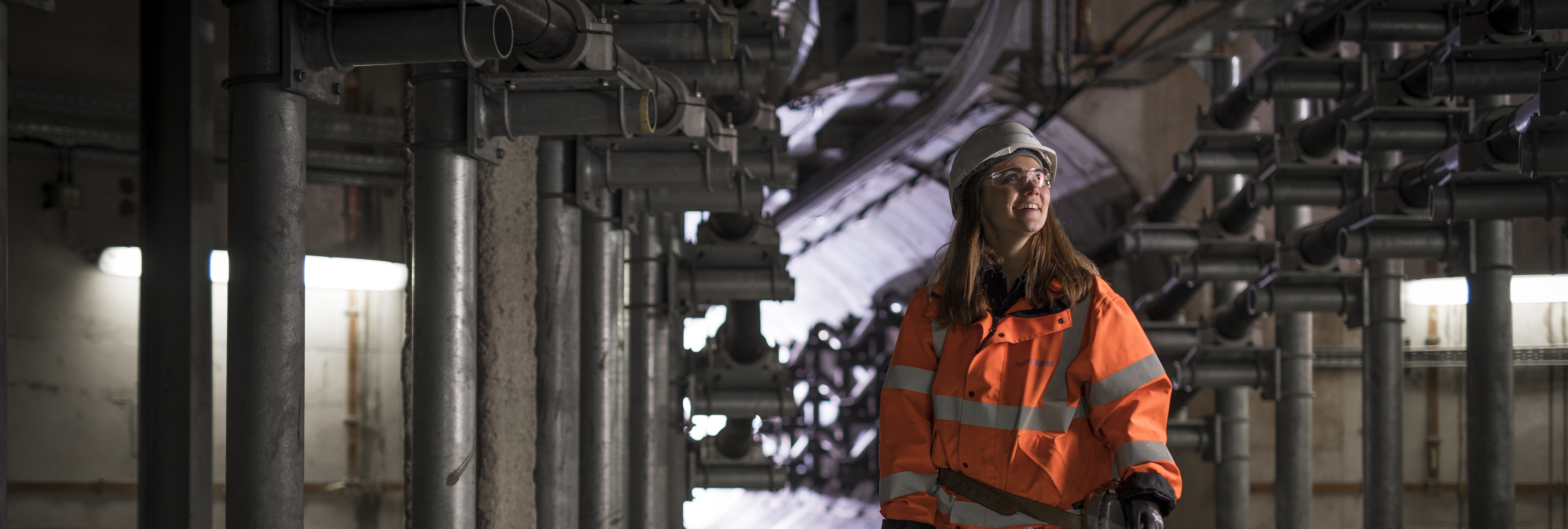
Tomorrow’s transmission network will need to move massive volumes of clean electricity around Britain, helping the country meet its climate targets and underpinning future economic growth.
We know that society is going to rely on electricity more and more to power daily life in the coming decades. This means that not only must we transform the scale of the network, but also its capabilities.
How the network will change
The demands on our electricity transmission network are changing dramatically as Britain decarbonises. Renewable power sources of all shapes and sizes are growing in volume, and major sources of energy demand – notably heat and transport – are electrifying.
By 2035 our energy landscape will look significantly different; and by 2050 it will have transformed even further to make the country’s ambitious net zero goals possible.
Click the titles below to discover how the energy landscape is changing.

The transmission network today
The transformation of our network is already under way. We have launched the Great Grid Upgrade – the largest overhaul of Britain’s electricity transmission network in generations – and alongside it we continue to deliver major projects to connect communities to clean power across England and Wales.
Looking back to look forward
As we look ahead to what a network of the future might look like, the early development of our current grid inspires the ambitious thinking we need today. In the 1950s, forward-thinking engineers – faced with the challenge of a constrained network – built a brand new ‘supergrid’ with spare capacity and the ability to accept future upgrades.
True to this vision of a future-proof network, higher capacity lines and more advanced technologies were installed throughout the sixties. Britain’s foresight and early engineering innovation laid the foundation for one of the world’s cleanest, safest and most reliable transmission networks.
1953

1958

1965

Our ultragrid concept

The Great Grid Upgrade is an important first step towards this vision, but creating further capacity on the transmission network is essential to meet the nation’s electricity needs. More capacity equals more choice, from enabling ambitious concepts such as smart cities – where transmission could be plugged directly into urban heartlands – to allowing new green industries to flourish. A lack of capacity is a barrier to these ambitions.
In short, we are at a point – as we were in the 1950s – that requires radical thinking about the make-up of the current transmission network.
One option that we are modelling at National Grid is to design and build an electricity superhighway network that would overlay the existing grid. Our ultragrid concept would be a strategically designed configuration that superimposes an ultra-high voltage direct current (UHVDC) network on top of the existing high voltage AC grid. This 8GW high-capacity spine would allow bulk power transfer at increased voltages – up to 800kV – to more efficiently move electricity from where it’s generated to where it’s consumed. Visually this configuration would look similar to today’s overhead lines.
If energy forecasts change, more extensions could be added, while strategically located high-capacity connection hubs would encourage developers to connect to the grid at planned locations. Complimentary high voltage alternating current (HVAC) routes up to 550kV could also be added to boost capacity in network-light areas.
Instead of hundreds of individual connection projects around the country all requiring approval and infrastructure, capacity hubs could encourage investment in locations where demand is high. Locations would include along the ultragrid network, and close to major industrial clusters with future hydrogen facilities, gigafactories or data centres.
Today’s connections pipeline is driving the need for up to 100 new substations or major site extensions in the next regulatory period. A more coordinated approach would target investment for more efficient construction and better value for consumers, with more clean power flowing in and out of the network in the right places.
Working hand-in-glove with Britain’s Strategic Spatial Energy Plan (SSEP), capacity hubs – together with credible and transparent information resources that are at developers’ fingertips – would give a clear signal to the market about where projects can connect.
What are the benefits of the ultragrid?
The ultragrid concept meets many of the principles underpinning what a future-proof, net zero electricity network needs to deliver for Britain – and would bring additional benefits.
 | Keeps options open: Designed with the future in mind, with strategically located nodes that can enable a phased and flexible build in line with the latest energy forecasts and nationally agreed plans. |
 | Reducing land take: Visually-similar network superimposed on the existing grid, limiting environmental impact and the number of communities hosting infrastructure. |
 | Built for future growth: An ultra-high voltage 8GW network spine with built in headroom to accommodate economic growth opportunities that might otherwise be constrained by a network reaching capacity. |
 | Secure by design: Capable of moving bulk clean power flexibly and reliably, and secure against more complex future operational scenarios that a constrained network would not handle efficiently. |
 | Smart use of capacity: Capacity hubs strategically located on the ultragrid network to give clear market signals and consolidate energy infrastructure and investment in the places they’re most needed. |
 | Clean energy vision: A net zero network delivered in coordination with Britain’s first Strategic Spatial Energy Plan (SSEP), giving communities and developers clarity on proposals and how they will benefit. |
 | More affordable: A strategically designed ultragrid that is built for growth will connect and move more affordable clean electricity, diminish constraint costs, and reduce consumer energy bills. |

Our future network vision
We’re sharing our future network vision at a time of unprecedented change in our industry’s operating environment, and in the way we plan network investment.
We now welcome and look forward to receiving views on the vision we’ve set out in this document.





